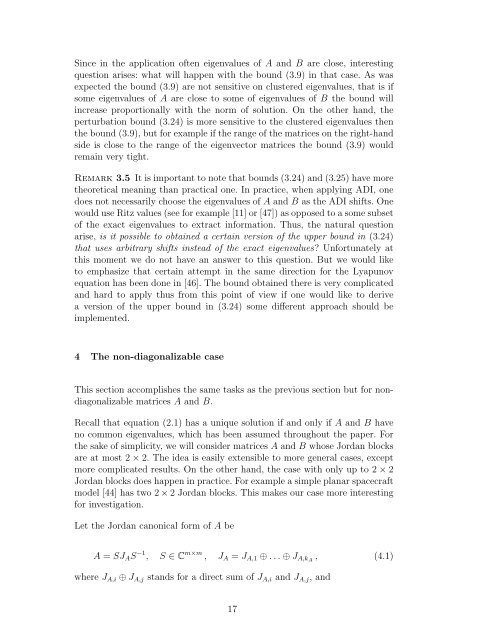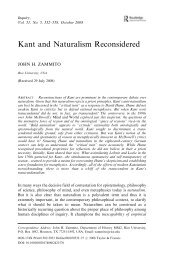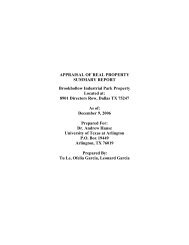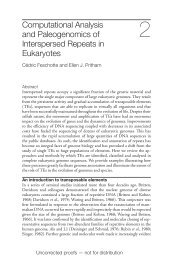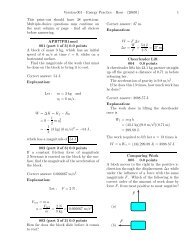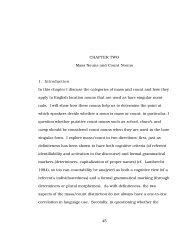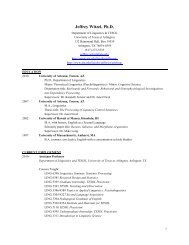Low Rank ADI Solution of Sylvester Equation via Exact Shifts
Low Rank ADI Solution of Sylvester Equation via Exact Shifts
Low Rank ADI Solution of Sylvester Equation via Exact Shifts
You also want an ePaper? Increase the reach of your titles
YUMPU automatically turns print PDFs into web optimized ePapers that Google loves.
Since in the application <strong>of</strong>ten eigenvalues <strong>of</strong> A and B are close, interestingquestion arises: what will happen with the bound (3.9) in that case. As wasexpected the bound (3.9) are not sensitive on clustered eigenvalues, that is ifsome eigenvalues <strong>of</strong> A are close to some <strong>of</strong> eigenvalues <strong>of</strong> B the bound willincrease proportionally with the norm <strong>of</strong> solution. On the other hand, theperturbation bound (3.24) is more sensitive to the clustered eigenvalues thenthe bound (3.9), but for example if the range <strong>of</strong> the matrices on the right-handside is close to the range <strong>of</strong> the eigenvector matrices the bound (3.9) wouldremain very tight.Remark 3.5 It is important to note that bounds (3.24) and (3.25) have moretheoretical meaning than practical one. In practice, when applying <strong>ADI</strong>, onedoes not necessarily choose the eigenvalues <strong>of</strong> A and B as the <strong>ADI</strong> shifts. Onewould use Ritz values (see for example [11] or [47]) as opposed to a some subset<strong>of</strong> the exact eigenvalues to extract information. Thus, the natural questionarise, is it possible to obtained a certain version <strong>of</strong> the upper bound in (3.24)that uses arbitrary shifts instead <strong>of</strong> the exact eigenvalues? Unfortunately atthis moment we do not have an answer to this question. But we would liketo emphasize that certain attempt in the same direction for the Lyapunovequation has been done in [46]. The bound obtained there is very complicatedand hard to apply thus from this point <strong>of</strong> view if one would like to derivea version <strong>of</strong> the upper bound in (3.24) some different approach should beimplemented.4 The non-diagonalizable caseThis section accomplishes the same tasks as the previous section but for nondiagonalizablematrices A and B.Recall that equation (2.1) has a unique solution if and only if A and B haveno common eigenvalues, which has been assumed throughout the paper. Forthe sake <strong>of</strong> simplicity, we will consider matrices A and B whose Jordan blocksare at most 2 × 2. The idea is easily extensible to more general cases, exceptmore complicated results. On the other hand, the case with only up to 2 × 2Jordan blocks does happen in practice. For example a simple planar spacecraftmodel [44] has two 2 × 2 Jordan blocks. This makes our case more interestingfor investigation.Let the Jordan canonical form <strong>of</strong> A beA = SJ A S −1 , S ∈ C m×m , J A = J A,1 ⊕ . . . ⊕ J A,kA , (4.1)where J A,i ⊕ J A,j stands for a direct sum <strong>of</strong> J A,i and J A,j , and17


